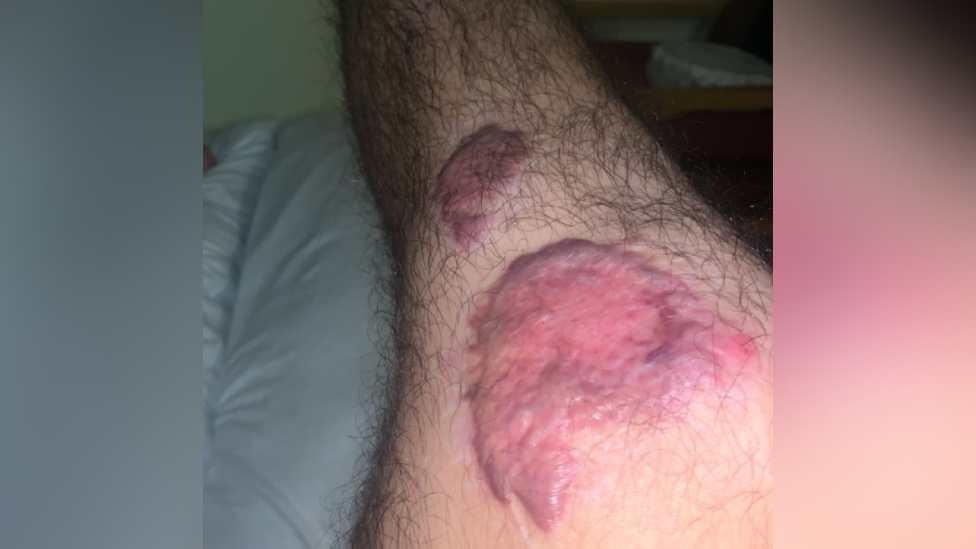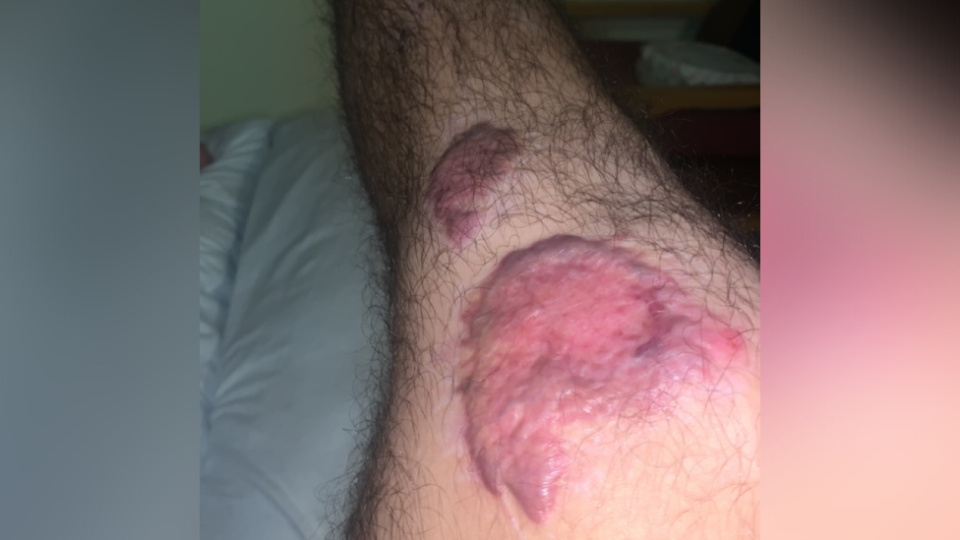Concrete is a ubiquitous building material, revered for its strength and durability. However, while it is instrumental in construction and infrastructure, it can pose health risks to those who come into direct contact with it in certain conditions. One of these risks is concrete burn, a type of chemical burn that can lead to discomfort and serious injury if not managed properly. This article aims to elucidate the causes, symptoms, and treatment of concrete burn to raise awareness and promote safety in construction and related fields.
What is Concrete Burn?
Concrete burn, also known as “lime burn,” occurs when skin comes into contact with wet concrete or cement. The alkaline nature of these materials can result in a chemical reaction that damages skin and underlying tissue. Unlike other burns that primarily result from thermal exposure (heat), concrete burn is a chemical burn, owing to the high pH levels of wet concrete—typically around 12-13, making it caustic and harmful to human tissues.

Causes of Concrete Burn
Concrete burn is primarily caused by:
-
- Direct Contact with Wet Concrete: When skin is exposed to wet concrete or cement for prolonged periods, the alkaline chemicals can cause irritation and chemical burns.
- Direct Contact with Wet Concrete: When skin is exposed to wet concrete or cement for prolonged periods, the alkaline chemicals can cause irritation and chemical burns.
-
- Skin Integrity: Cuts, abrasions, or pre-existing skin conditions may exacerbate the effects of exposure to wet concrete, making the skin more susceptible to burns.
- Skin Integrity: Cuts, abrasions, or pre-existing skin conditions may exacerbate the effects of exposure to wet concrete, making the skin more susceptible to burns.
-
- Poor Protective Measures: Inadequate protective gear, such as gloves or long sleeves, increases the risk of exposure. Many workers underestimate the potential harm of accidental contact with wet concrete.
- Poor Protective Measures: Inadequate protective gear, such as gloves or long sleeves, increases the risk of exposure. Many workers underestimate the potential harm of accidental contact with wet concrete.
-
- Frequent Exposure: Continuous exposure to wet concrete poses cumulative risks, raising the likelihood of developing a burn over time.
- Frequent Exposure: Continuous exposure to wet concrete poses cumulative risks, raising the likelihood of developing a burn over time.
-
- Warm Weather Conditions: In hot weather, workers may encounter more concentrated wet concrete as moisture evaporates, increasing the likelihood of chemical interactions with the skin.
Symptoms of Concrete Burn
Concrete burn can manifest in various symptoms that may vary in severity based on the duration and extent of exposure. Common symptoms include:
-
- Redness and Irritation: Early signs may include localized redness, itchiness, or mild burning sensations on the affected areas.
- Redness and Irritation: Early signs may include localized redness, itchiness, or mild burning sensations on the affected areas.
-
- Swelling and Blisters: More severe symptoms can manifest as swelling, the formation of blisters, and an acute sensation of pain.
- Swelling and Blisters: More severe symptoms can manifest as swelling, the formation of blisters, and an acute sensation of pain.
-
- Chemical Burns: In extreme cases, concrete burn can cause deep tissue damage that may resemble second-degree burns, leading to exfoliation of the skin and potential infection.
- Chemical Burns: In extreme cases, concrete burn can cause deep tissue damage that may resemble second-degree burns, leading to exfoliation of the skin and potential infection.
-
- Delayed Reactions: Symptoms may sometimes take hours or even days to fully develop, which can complicate diagnosis and treatment.
Treatment of Concrete Burn
Prompt and appropriate treatment is crucial in mitigating the effects of concrete burn. Initial steps should include:
-
- Immediate Rinse: If skin comes into contact with wet concrete, the first step should be to rinse the affected area with copious amounts of clean, cool water for at least 20 minutes to neutralize the alkaline substances.
- Immediate Rinse: If skin comes into contact with wet concrete, the first step should be to rinse the affected area with copious amounts of clean, cool water for at least 20 minutes to neutralize the alkaline substances.
-
- Remove Contaminated Clothing: Any clothing or accessories that may have come into contact with wet concrete should be removed gently to avoid further irritation.
- Remove Contaminated Clothing: Any clothing or accessories that may have come into contact with wet concrete should be removed gently to avoid further irritation.
-
- Monitor Symptoms: After rinsing, it’s essential to monitor the affected area for any signs of worsening or complications.
- Monitor Symptoms: After rinsing, it’s essential to monitor the affected area for any signs of worsening or complications.
-
- Seek Medical Attention: If severe symptoms develop, such as extensive redness, swelling, or pain, it is important to seek medical assistance. Healthcare professionals can provide appropriate treatment such as prescription medications, dressing changes, and wound care.
- Seek Medical Attention: If severe symptoms develop, such as extensive redness, swelling, or pain, it is important to seek medical assistance. Healthcare professionals can provide appropriate treatment such as prescription medications, dressing changes, and wound care.
-
- Avoid Irritants: If a person has suffered a concrete burn, they should avoid exposing the affected area to other irritants or harsh chemicals until it has healed.
- Avoid Irritants: If a person has suffered a concrete burn, they should avoid exposing the affected area to other irritants or harsh chemicals until it has healed.
-
- Follow-up Care: Continued monitoring and follow-up care might be necessary, especially in severe cases, to ensure proper healing and prevent infection.
Prevention of Concrete Burn
Taking preventive measures is essential in reducing the risk of concrete burn. Here are some effective strategies:
-
- Wear Protective Gear: Appropriate gloves, long sleeves, and pants should be worn when working with or around wet concrete.
- Wear Protective Gear: Appropriate gloves, long sleeves, and pants should be worn when working with or around wet concrete.
-
- Use Barrier Creams: Skin barrier creams can provide an additional layer of protection against irritating substances.
- Use Barrier Creams: Skin barrier creams can provide an additional layer of protection against irritating substances.
-
- Educate Workers: Training programs that address the risks associated with wet concrete can raise awareness and foster a culture of safety.
- Educate Workers: Training programs that address the risks associated with wet concrete can raise awareness and foster a culture of safety.
-
- Implement Safety Protocols: Companies and managers should establish safety protocols and ensure that workers have readily accessible resources and training on handling concrete safely.
- Implement Safety Protocols: Companies and managers should establish safety protocols and ensure that workers have readily accessible resources and training on handling concrete safely.
-
- Environmental Considerations: In warmer conditions, extra caution should be exercised around wet concrete, with regular breaks and monitoring for exposure.
Conclusion
Concrete burn is a serious, yet often overlooked hazard in construction environments. By understanding the causes, symptoms, and treatment options, both workers and employers can take proactive measures to safeguard against this painful injury. Awareness, education, and proper safety practices are vital in preventing concrete burns and ensuring the health and well-being of those who work with this essential material.
